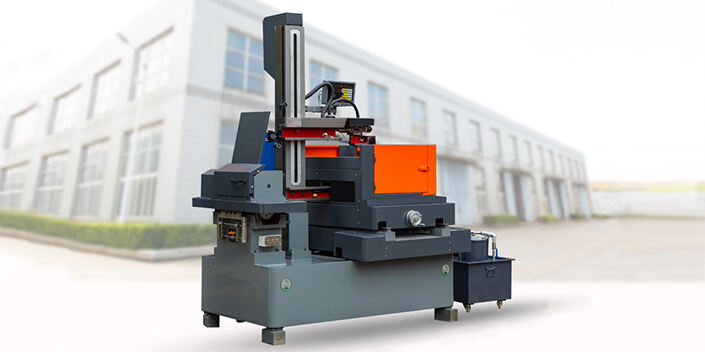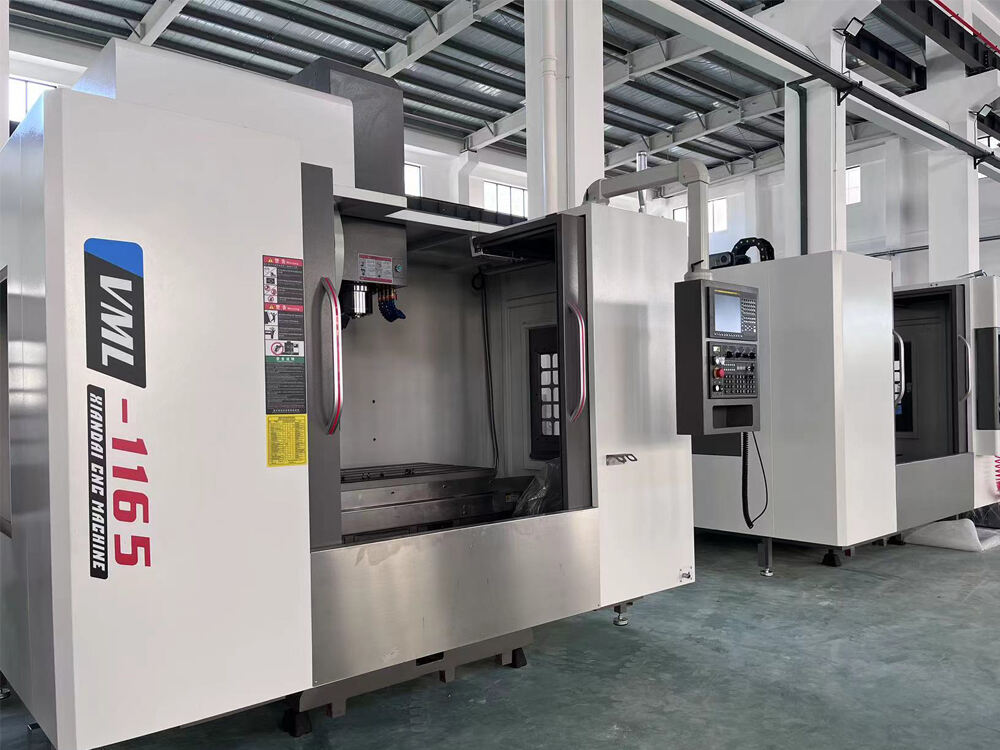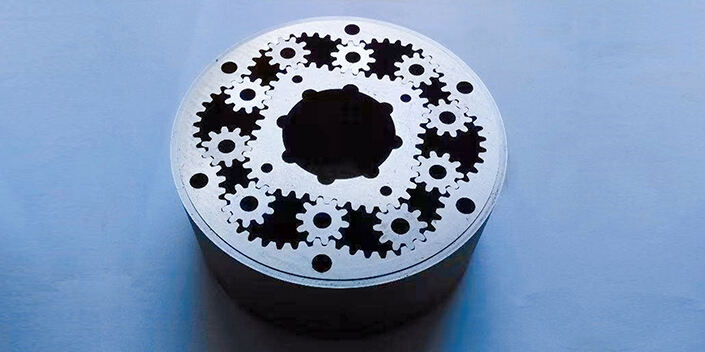Defining Deep Hole Machining: Depth Ratios & Applications
Depth-to-Diameter Ratio Standards
When talking about deep hole machining, the depth-to-diameter ratio (DDR) is really important for classification purposes. Most people consider anything over 5:1 as deep hole work, though some cases go all the way to 100:1 or beyond. Working with these high DDRs presents quite a challenge for engineers who need special tools and specific approaches just to get decent results without wasting time or materials. Industry standards help manufacturers pick the right machining method based on what they actually need for their projects. Following these rules makes a big difference in both how good the finished product looks and how much money gets spent during production. Take modern equipment for example many machines now can drill holes that are literally 100 times deeper than their own diameter, something that would have been impossible just a few years ago and shows how far this field has come technologically speaking.
Key Industries Requiring Deep Hole Techniques
Deep hole machining plays a major role across several key industries including aerospace, automotive, and oil and gas. These sectors rely heavily on precise components like fuel injector nozzles and complex hydraulic systems that require deep drilling capabilities. For aircraft manufacturers, creating accurate deep holes is vital when making fuel injectors that must withstand extreme conditions at altitude. Meanwhile car makers depend on similar techniques to construct reliable hydraulic circuits within transmissions and braking systems. Industry reports suggest we'll see substantial growth in demand for these specialized machining methods over the next few years as technology continues advancing. Manufacturers are constantly looking for ways to improve component accuracy while meeting stricter performance standards, which makes deep hole processing an increasingly important part of modern manufacturing practices.
Essential Tools for Deep Hole Machining
Spade Drills: Speed vs. Precision Tradeoffs
Spade drills strike a good balance between speed and accuracy for deep hole drilling work, especially when dealing with softer metals like aluminum or brass. These tools work great because they cut through material pretty efficiently, though picking the correct spade drill isn't something to rush. Operators need to think about what kind of material they're working with and how deep the hole needs to go before making a selection. The downside comes when running these drills too fast, which tends to throw off their precision. That's why experienced machinists take extra care during operation to keep things within spec and make sure whatever gets produced actually meets those quality requirements everyone talks about.
Twist Drills: Parabolic Flute vs. Coolant-Fed Carbide
When it comes to deep hole drilling, twist drills really shine as go-to tools, though their design makes all the difference in how they perform. The parabolic flute design helps clear chips away from the work area, which stops things from getting clogged up and potentially damaging the drill bit itself. Coolant-fed models get a lot of attention too because they handle heat much better during operation. Some research indicates that switching to coolant-fed carbide drills might actually extend tool life around 30% longer than standard options, which translates into real money saved over time. Most shops find themselves choosing between these two designs based on what kind of materials they're working with, the particular job requirements, and whether their current machinery can accommodate either option without major modifications.
Gundrills: Achieving 100:1 Depth Ratios
Gundrills have been built specifically for deep hole drilling where the depth compared to diameter can get really extreme sometimes hitting ratios of 100 to 1 or beyond. The way these tools are constructed allows manufacturers to drill holes with incredible precision which is why they're so widely used across sectors like aerospace manufacturing and car part production. What makes gundrills stand out is how well they perform even when working through tough materials without sacrificing either speed or accuracy. For companies dealing with tight tolerances and demanding specifications, this means being able to produce parts that meet exacting standards while still keeping production costs under control. Many shops report significant improvements in both quality and output after switching to gundrill technology for their deep hole needs.
Material Considerations in Deep Hole Machining
Aluminum: Chip Evacuation Challenges
Machining aluminum presents a real headache for manufacturers because of those pesky long, stringy chips the metal produces. These chips tend to cause all sorts of trouble during operations. Tool binding becomes a common issue, messing up dimensional accuracy and wearing down cutting tools at an alarming rate. Getting rid of these chips effectively matters a lot in production environments. Some shops have had success by adjusting their approach to chip removal. Specialized drill designs work wonders here, along with tweaking feed rates to match what the material demands. Drill bits with higher helix angles seem to handle the situation better, especially when combined with smooth flute surfaces. This combination makes a noticeable difference in how well chips are managed during aluminum drilling processes.
Exotic Alloys: Hastelloy/Inconel Solutions
Materials like Hastelloy and Inconel have gained a reputation for being super strong while resisting both corrosion and extreme heat. However, working with these tough alloys presents serious challenges during machining operations. Getting good results requires advanced machining methods, and selecting the right tools makes all the difference in practice. Specialized tool materials along with protective coatings that handle high temps and abrasion really boost performance and extend how long tools last before needing replacement. According to studies done in this field, using these specialized tools can actually improve machining efficiency when working with exotic metals by around 40%. For companies regularly handling such difficult materials, investing in modern tooling technology isn't just beneficial it's becoming necessary to stay competitive in today's manufacturing landscape.
High-Silicon Materials: PCD Tool Requirements
In the automotive sector, high silicon content materials have become pretty standard because they just hold up better over time. But there's a catch. Silicon is really tough on cutting equipment, so most shops end up needing those special polycrystalline diamond tools to keep from wearing out their regular bits too fast. These PCD tools handle the rough stuff much better and actually let machinists work faster without compromising quality. When companies get familiar with what these silicon-rich materials demand from their machinery, they start seeing real improvements in surface finish quality and longer tool lifespan. Switching to PCD isn't just some fancy upgrade. For many manufacturers, it's turning into a must-have solution that boosts output while saving money on both downtime and constantly replacing worn out cutting tools.
Optimizing Tool Selection Parameters
Coolant Pressure: 250 PSI vs 1,000 PSI Systems
Getting the right coolant pressure right matters a lot for making deep hole machining work better. Most of these systems run somewhere between 250 and 1,000 pounds per square inch typically. When shops push the pressure higher, they often see better results with chip removal and cooling. But there's a catch here too. The tools need to handle those pressures without breaking down or losing their edge. Shops that have worked through this know that finding the sweet spot for coolant pressure really pays off in terms of productivity. It basically means the coolant can do its job removing chips and heat while the tools stay strong enough under pressure to keep performing as expected.
Machine Capabilities: Spindle Quality & Hydraulic Chucks
Getting accurate results from deep hole machining really depends on two main factors: how good the machine spindle is and what kind of grip force comes from those hydraulic chucks. Better quality spindles mean the machine rotates more accurately, which matters a lot when working on tight tolerances in these kinds of jobs. Meanwhile, hydraulic chucks give much stronger hold on workpieces, reducing wobble and keeping tools steady while cutting happens. When manufacturers upgrade these parts, they typically see fewer problems with their machines breaking down or needing constant adjustments. Real world experience shows companies that spend money on top notch equipment often find themselves producing higher quality parts faster than before. For shops looking to stay competitive in machining markets where precision counts, investing in reliable hardware makes all the difference between meeting specs consistently and struggling with rework costs.
Specialized Deep Hole Equipment Integration
EDM Machining for Complex Geometries
EDM, or Electrical Discharge Machining, has changed how we approach manufacturing complex shapes that just aren't possible with standard cutting tools. This method works particularly well when dealing with tough materials like hardened steel or exotic alloys where traditional machining falls short. Take the aerospace sector for example. When making those complicated turbine blades with all their tiny cooling channels, EDM gets the job done while still hitting those strict quality requirements set by aviation authorities. Many shops now combine EDM processes with regular deep drilling methods to boost what they can produce. The result? Faster turnaround times on intricate parts without sacrificing accuracy, something that keeps manufacturers competitive in today's market.
Laser Cutting Machine Alternatives
Laser cutters are gaining traction across many industries where deep hole drilling and other precision cuts matter most. These machines save time during product development stages and help manufacturers waste less raw material too. Take the automotive sector for example. Car makers often start with laser cutting to get parts into roughly the right shape before moving onto finer machining operations later on. The process actually speeds things up quite a bit compared to traditional methods. With competition heating up in manufacturing circles, more shops are turning to laser tech these days. It makes sense when looking at both the clock and the bottom line since it cuts down on wasted hours and improves accuracy significantly over older techniques.




